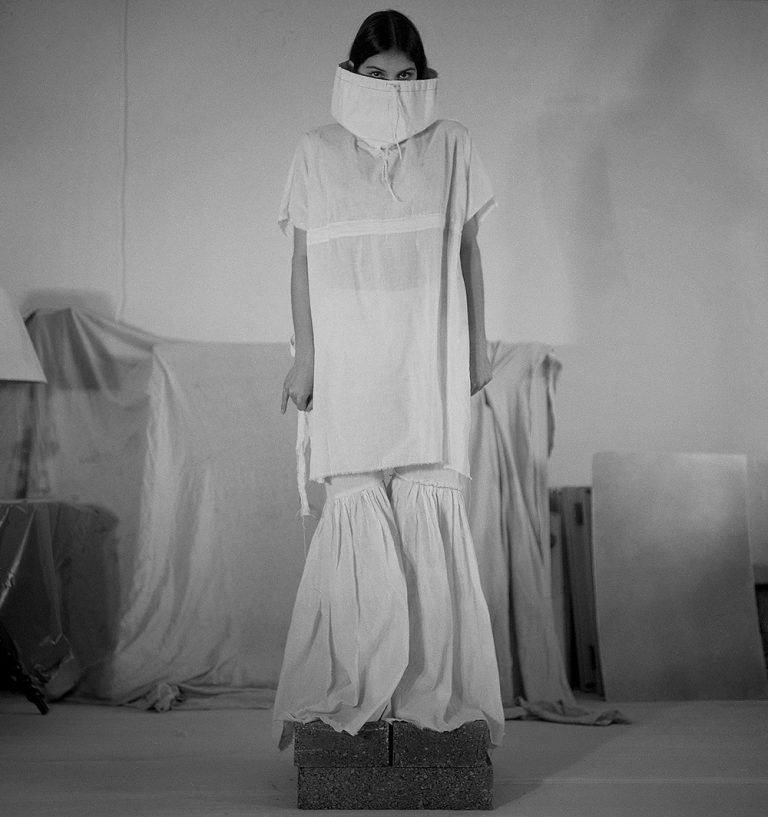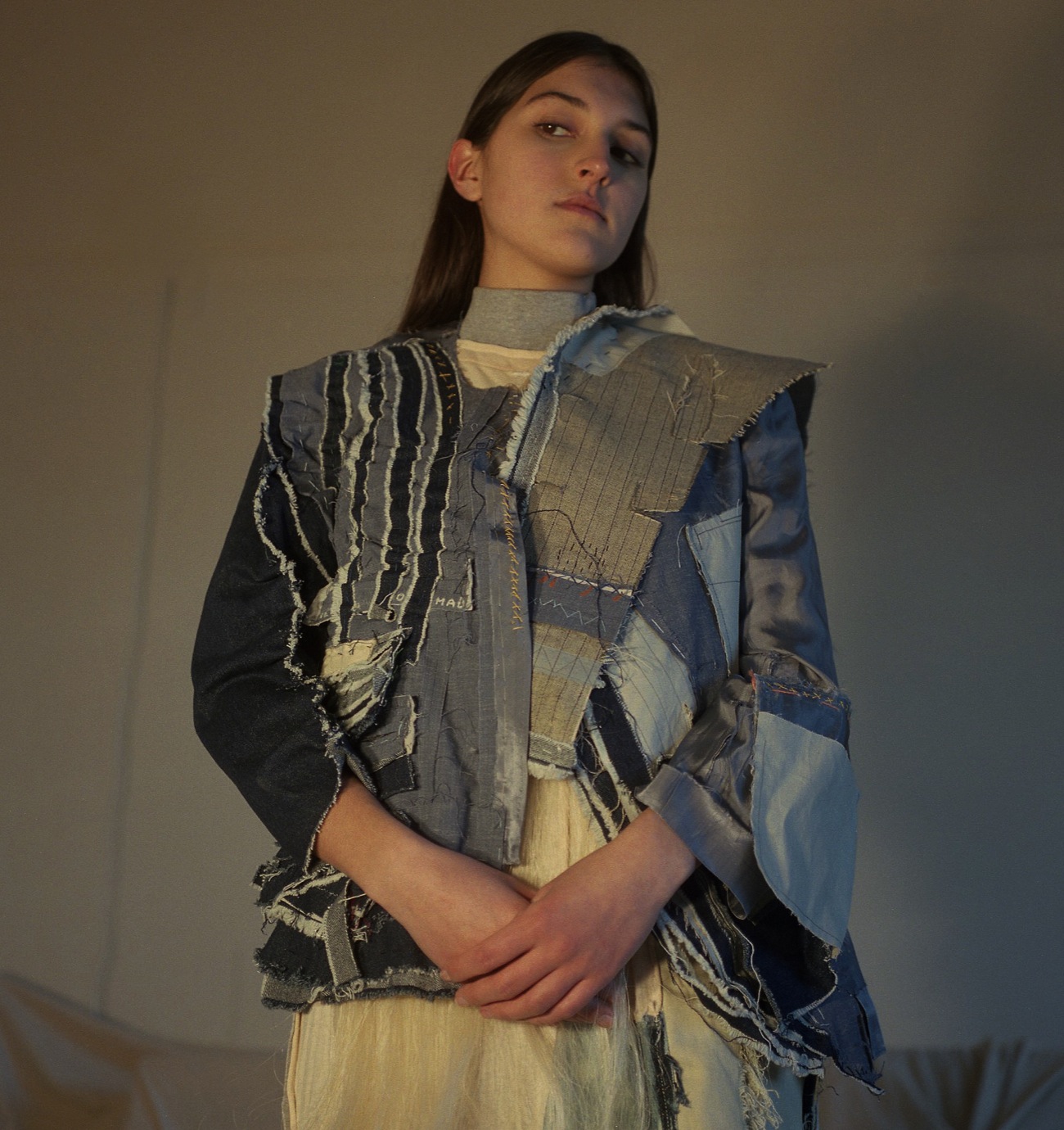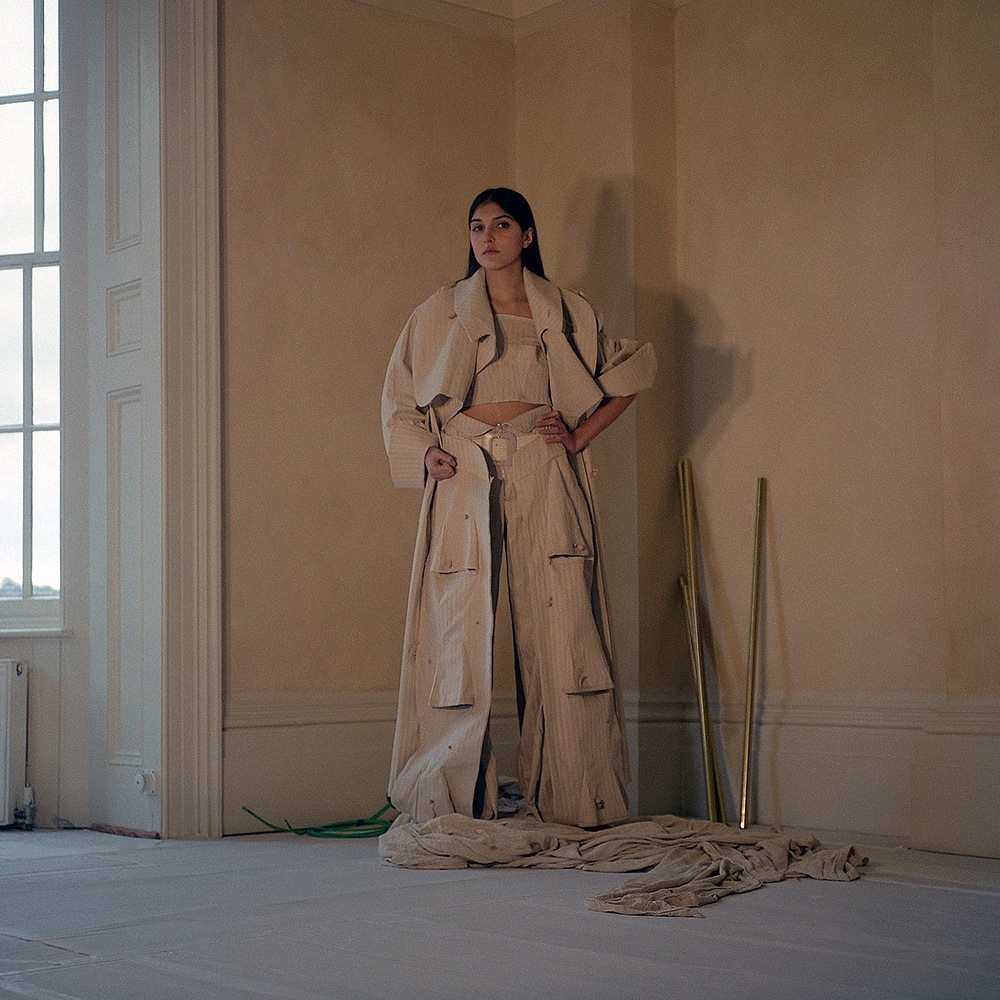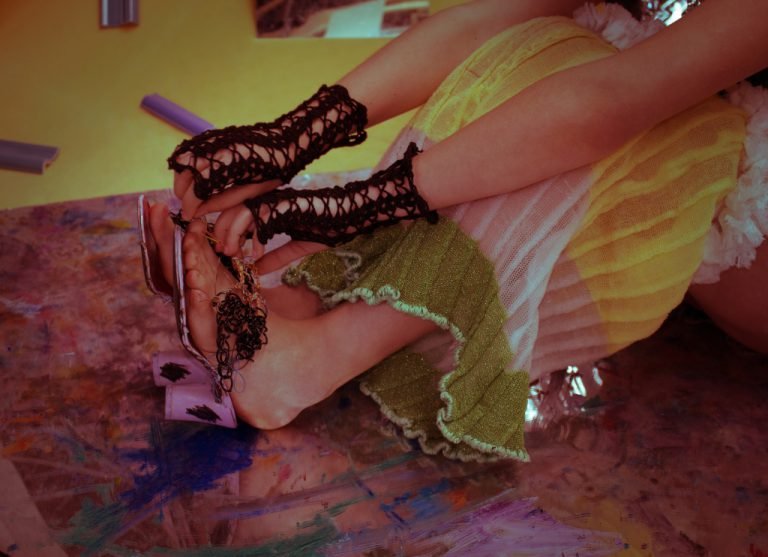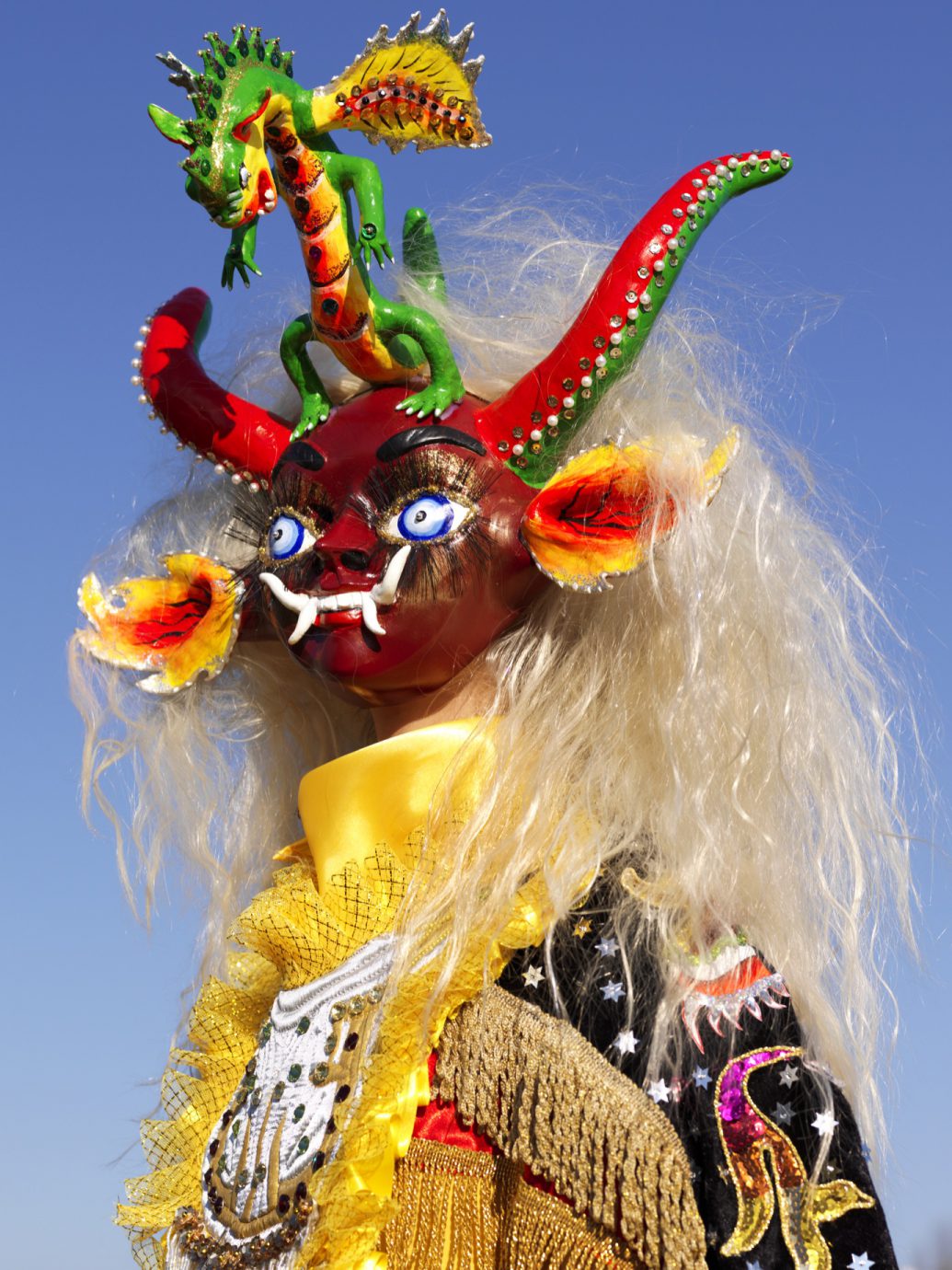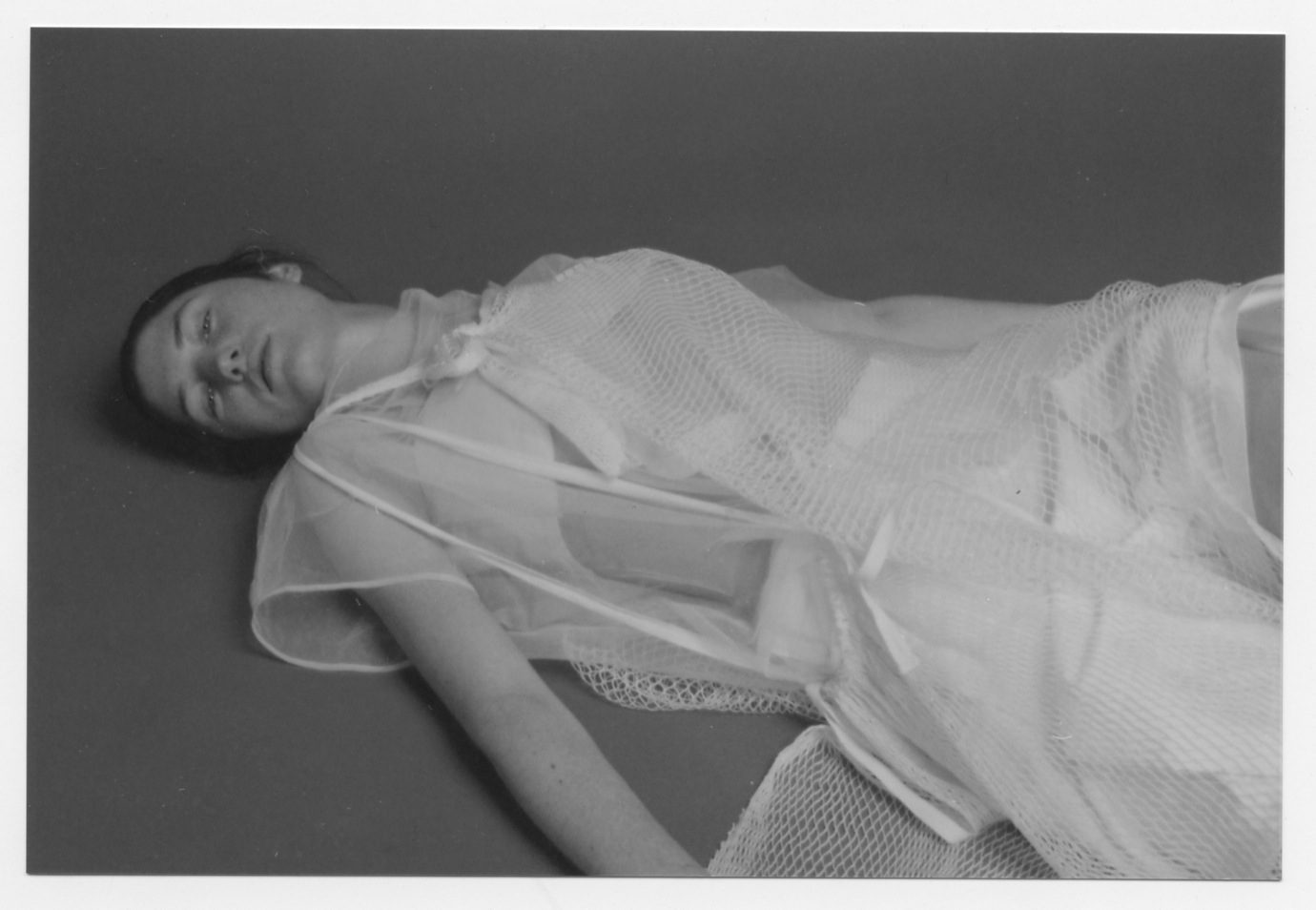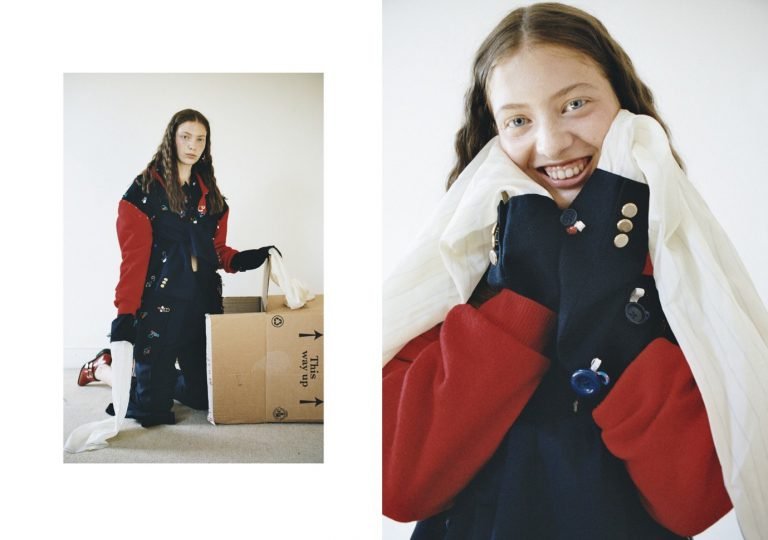CSM BA Fashion students’ take on Deconstruction
How does one fully understand a garment? Some may search for a ‘soul’ in it, taking apart the seams of a stained jacket found in a car boot sale, others meticulously rework their toiles to discover that things are more coherent when not blended together in a conventional way.
In fashion, ‘deconstruction’ often simply gets labeled as that what looks unfinished. Threads are still hanging, a sleeve is purposely not attached properly, some crucial elements seem to be missing. We looked at the work of several undergraduate fashion design students to discover their take on the term, and drove to the countryside to capture their looks — shot by first year Fine Art student Jonas McIlwain — in a mansion that was, as you can guess, being deconstructed.
You’ve just got into Womenswear from the Fashion Folio course, well done! How was that process? Do you think you’ve grown since foundation?
Thank you! I’m really pleased. The process was really positive from start to finish – I think having a year after foundation where you are still working on this portfolio could be really challenging, and the act of dwelling on something big like that doesn’t feel great either. But I found this wonderful ability that I didn’t have on foundation to just suck it up and do the work. I hated sketchbooks and doing any type of drawing on foundation, so I went away that summer and forced myself to find something that worked. It was a lot of that first, but I was happy that the following year didn’t feel at all forced.
Half of your garments seem to be back-to-front. Was this part of a brief or something you’ve decided to explore yourself?
It’s something I’ve been exploring. I think it’s really due to my simple approach to design. I really don’t think about things too much, and I really like a natural and simple reaction to or against something. With the back-to-front pieces like the red raincoat, it was taking something that had a familiar identity, and subverting it into something you wouldn’t traditionally associate with the item’s original identity. I really like the idea of making something from something else; it feels romantic to me. The sequin dresses follow this same ethos of extremely simple design. One was just a beaded chiffon sweatshirt that was split open along a sleeve, transforming it into this fringed low-cut back dress. If you look closely, you can see how the front and back panels wrap around to the back of the dress, and are suspended with grosgrain straps. You can literally see the shapes hanging there, they haven’t been cut into at all.
How do you want your wearer to feel in your clothes?
The clothes are always made to evoke feeling. I put a lot of emotion into it and it comes from a very naive place. I don’t know how to describe it other than it being an emotional response to a stimulus, and I’d want the person wearing it to feel something as strong as I feel when designing. Our relationship to clothing is so bizarre to begin with, because we use it as something that stores memories, it becomes something more than an inanimate object; we bring it to life. So I suppose I want someone to bring my clothes to life, that’s all I wish!
What do you get up to when you’re not in college?
I love where I’m from, back in New York. I decided to come back to Bedford to get away from London for a bit. When I’m here I like gardening and collecting flowers. I run, in an effort to come up with new ideas, I think it helps to clear my head. I’m going to New Mexico this Easter to visit my aunt. She lives out there in something called an ‘earth ship’. It’s completely off the grid and is made of 100% reclaimed materials, and has no carbon footprint! You should really look them up, they’re amazing. I’ll be out there for a month to clear my head even more, and get inspired for new work. I’m bringing an empty suitcase and want to fill it up with things from the art markets in Santa Fe. Somewhat of a new direction.
What course are you on?
I’m currently in my second year of BA Womenswear.
What were you doing before you started this?
I came straight from high school!
Who was your biggest inspiration for this piece?
A German artist called Lothar Hempel. I was also looking at a photography book on female mountaineers from the turn of the 20th century; in the photographs they’re all climbing in full tailored suits and gowns.
Who are you designing for? What can you see your wearer doing in your pieces?
Someone who’s looking at details. The idea was to make something practical enough to wear in an everyday situation, with a decorative element that can be removed by the wearer. Like a business suit, but for someone who’s killing two birds with one stone. So you can be smart, but also not at the same time. Warm as well.
What was the brief for this project?
It was actually during the jacket project on foundation course that I made this piece. I didn’t even know how to make patterns properly at the time! We had to buy one jacket and one fabric for the project. I found a light blue tailored jacket in a charity shop that had enough details for me to play with. I then chose denim as my fabric, to create a nice balance. Throughout the project, I played around a lot with the jacket. We learnt draping and deconstructing and accompanied everything with drawings. Since the project I find that drawing has become a really good way for me to develop my ideas.
How do you think this experimentation affected the outcome of your piece?
When I deconstructed the jacket, I really liked the colour and texture of the lining fabric. It had some orange marks on it, which turned out looking good as a print, and the texture was raw. The final outcome became an incorporation of all of these details.
Where do you look for inspiration?
I love visiting galleries and museums, especially after I’ve just finished a project. I feel like when I go to these places, I’m absorbing a sort of energy, filling up my batteries. I also think it helps being surrounded by people with good taste, I look to these people for inspiration too!
With all this denim, I have to ask what you think about Marques’Almeida’s denim wear?
It’s cool! They know how to work with denim. They maximize it and exaggerate its character. Their garments are very enjoyable; we can feel a really specific mood through their clothes; they’re fun and exciting, but also beautiful. I think that’s ultimately what we want in our closet.
How do you want your wearer to feel when in your garments?
I want my wearer to be happy in my clothes; I want them to pick my garments when they want to show their personality.
What were you doing before you started at CSM?
Before I started here, I did a 2-year fashion design diploma in Vancouver, Canada.
What pathway are you on?
I’m in second year Womenswear.
What are your main influences?
My influences are ever changing, I’m usually preoccupied with a current obsession. Boredom, naivety and repetition among other things have become prominent factors within these obsessions. I create a dialogue around these themes, referencing art, spaces and garments, to incorporate them into my work.
Who are you designing for?
It’s not necessarily set at this moment. I do believe that they have to be constantly changing, somewhat muted and relatively serious. They should have obsessions like myself, but have an interest in everything. It’s important to be into low and high fashion and be able to establish a style from that.

